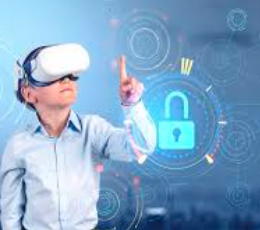A Personalized Learning Lab is a dedicated space where students engage in self-directed, interest-driven, and goal-oriented learning experiences. Unlike traditional classrooms, these labs are designed to support a wide range of activities—research, collaboration, creation, and reflection—based on each learner’s individual path. Building a personalized learning lab involves more than rearranging furniture; it requires thoughtful planning around purpose, resources, and instructional strategy. Here’s how to create one that fosters engagement, autonomy, and meaningful growth.
1. Define the Purpose of the Learning Lab
Start with a clear vision. Will your lab support project-based learning, independent study, targeted skill development, or all of the above? Understanding your lab’s goals will shape decisions about layout, tools, scheduling, and teacher roles.
2. Design Flexible Learning Zones
Divide the space into zones that serve different learning activities:
- Quiet zones for reading, writing, and reflection
- Collaboration areas for peer work and discussion
- Tech stations for digital learning tools and research
- Makerspaces for hands-on creation and experimentation
Movable furniture, soft seating, and portable dividers can make it easy to reconfigure the space as needs evolve.
3. Equip the Lab with Varied Resources
Provide access to a mix of digital and physical tools. These may include laptops, tablets, headphones, whiteboards, art supplies, manipulatives, and learning journals. Stock materials that support a range of disciplines and learning preferences to ensure students can explore concepts in personalized ways.
4. Create Systems for Goal-Setting and Reflection
Personalized learning labs thrive when students are empowered to monitor their own growth. Use learning portfolios, digital dashboards, or progress trackers to help learners set goals, plan tasks, and reflect on outcomes. Regular reflection routines support metacognitive development and ownership.
5. Build in Teacher Facilitation and Support
Teachers in a learning lab act as guides, coaches, and co-learners. Schedule time for one-on-one conferencing, skill-building workshops, and check-ins. Provide structured opportunities for feedback and guidance while allowing students the independence to explore and problem-solve.
6. Foster a Culture of Choice and Responsibility
Encourage learners to take initiative by offering them choices in what to study, how to demonstrate understanding, and when to complete tasks. Establish clear expectations and routines that support autonomy while maintaining accountability and mutual respect.
7. Use Data to Inform Personalization
Collect and analyze data on student performance, engagement, and preferences. Use this information to adjust resources, plan mini-lessons, and group students effectively. Personalized learning labs work best when they evolve based on student needs.
Conclusion
Creating a Personalized Learning Lab is an investment in student-centered education. By designing a flexible space equipped with purposeful tools, clear routines, and opportunities for reflection and choice, educators can cultivate an environment where all learners thrive. Whether implemented in a single room or across an entire school, a learning lab has the potential to transform education into a more personalized, engaging, and empowering experience.






